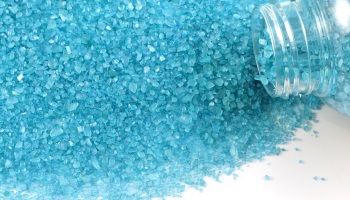
Bath Salts are the most popular name for a group of synthetic “party” drugs containing one or more chemicals similar to cathinone, an amphetamine-like stimulant found naturally in the Khat plant. Synthetic cathinones is an umbrella term for several chemicals such as mephedrone, MDVP (3,4 – methylenedioxypyrovalerone), N-methylcathinone (also known as methcathinone or cat), 4-fluoromethcathinone (also known as flephedrone or 4-FMC). They are known under a variety of street names such as synthetic cocaine, white horse, white lightning, k4 rage, blue magic, bliss, white rush and others.
How bath salts are abused
Bath salts are typically ingested, inhaled, injected, smoked, or snorted. They have been known to be sold by independent dealers as ecstasy in a powdered form, tablet or in a capsule containing cathinones combined with MDMA or other illicit controlled substances.
How bath salts affect the brain
Bath salts or synthetic cathinones act as central nervous stimulants and affect the brain much like amphetamines but cause symptoms lasting up to four hours, including euphoria and hallucinations.
Signs of abuse
The drug has been reported as highly addictive and causative of intense cravings in its users. Heavy intake has been known to lead to high blood pressure, chest pain, delusions, nausea, vomiting, paranoia, panic attacks, seizures, and suicidal thoughts.
Long term effects of abuse
Because the drug is highly addictive, frequent use may induce tolerance and dependence, along with potential cardiac problems and psychological stress.
Bath Salts overdose
An overdose on bath salts would be very similar to an overdose on amphetamines and may include the following symptoms: difficulty breathing, nausea and vomiting, violent or aggressive behavior, hallucinations, convulsions, unconsciousness and death.
Mixing with other drugs
Because bath salts are similar to amphetamines the sedation of an opiate would counteract the overall effects of the drug. Stimulants can also mask the depressive effects of alcohol and cloud judgment about when to stop drinking.
Detox
Withdrawal from extended binges has been known to cause withdrawal symptoms such as depression, lethargy, weakness, bruxism (teeth grinding, jaw clenching), kidney pain, abdominal pain, and bloodshot eyes. Withdrawals can last up to eight hours.
Drug Tests
The presence of synthetic cathinones cannot be detected by current standard drug tests. Currently only one toxicology laboratory offers tests for designer stimulant drugs.
Legal Status
Cathinones are not yet scheduled under the Federal Controlled Substances Act. However, possession and distribution can still be prosecuted under the Federal Controlled Substance Analogue Enforcement Act.
———
http://www.justice.gov/archive/ndic/pubs44/44571/44571p.pdf
http://www.drugabuse.gov/publications/drugfacts/synthetic-cathinones-bath-salts
http://www.vpul.upenn.edu/alcohol/stimulants.php
http://www.oasas.ny.gov/AdMed/FYI/BathSalts.cfm
Informative Videos
;
